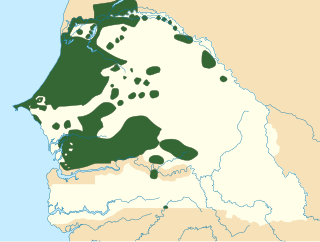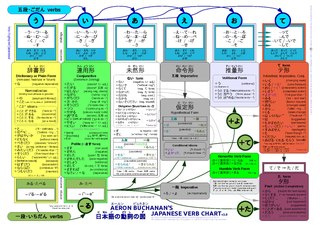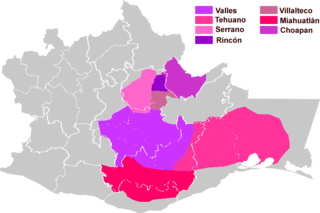Aspect is a grammatical category that expresses how an action, event, or state, denoted by a verb, extends over time. Perfective aspect is used in referring to an event conceived as bounded and unitary, without reference to any flow of time during. Imperfective aspect is used for situations conceived as existing continuously or repetitively as time flows.
The partitive case is a grammatical case which denotes "partialness", "without result", or "without specific identity". It is also used in contexts where a subgroup is selected from a larger group, or with numbers.

Fortune telling is the practice of predicting information about a person's life. The scope of fortune telling is in principle identical with the practice of divination. The difference is that divination is the term used for predictions considered part of a religious ritual, invoking deities or spirits, while the term fortune telling implies a less serious or formal setting, even one of popular culture, where belief in occult workings behind the prediction is less prominent than the concept of suggestion, spiritual or practical advisory or affirmation.

Wolof is a language of Senegal, the Gambia and Mauritania, and the native language of the Wolof people. Like the neighbouring languages Serer and Fula, it belongs to the Senegambian branch of the Niger–Congo language family. Unlike most other languages of the Niger-Congo family, Wolof is not a tonal language.
The preterite or preterit is a grammatical tense or verb form serving to denote events that took place or were completed in the past. In general, it combines the perfective aspect with the past tense, and may thus also be termed the perfective past. In grammars of particular languages the preterite is sometimes called the past historic, or the aorist. When the term "preterite" is used in relation to specific languages it may not correspond precisely to this definition. In English it can be used to refer to the simple past verb form, which sometimes expresses perfective aspect. The case of German is similar: the Präteritum is the simple (non-compound) past tense, which does not always imply perfective aspect, and is anyway often replaced by the Perfekt even in perfective past meanings.

In linguistics, a compound verb or complex predicate is a multi-word compound that functions as a single verb. One component of the compound is a light verb or vector, which carries any inflections, indicating tense, mood, or aspect, but provides only fine shades of meaning. The other, "primary", component is a verb or noun which carries most of the semantics of the compound, and determines its arguments. It is usually in either base or [in Verb + Verb compounds] conjunctive participial form.
The past tense is a grammatical tense whose function is to place an action or situation in past time. In languages which have a past tense, it thus provides a grammatical means of indicating that the event being referred to took place in the past. Examples of verbs in the past tense include the English verbs sang, went and was.
Aorist verb forms usually express perfective aspect and refer to past events, similar to a preterite. Ancient Greek grammar had the aorist form, and the grammars of other Indo-European languages and languages influenced by the Indo-European grammatical tradition, such as Middle Persian, Sanskrit, Armenian, the South Slavic languages, and Georgian, also have forms referred to as aorist.
The perfect tense or aspect is a verb form that indicates that an action or circumstance occurred earlier than the time under consideration, often focusing attention on the resulting state rather than on the occurrence itself. An example of a perfect construction is I have made dinner: although this gives information about a prior action, the focus is likely to be on the present consequences of that action. The word perfect in this sense means "completed".
The continuous and progressive aspects are grammatical aspects that express incomplete action or state in progress at a specific time: they are non-habitual, imperfective aspects.
The imperfective is a grammatical aspect used to describe a situation viewed with interior composition. The imperfective is used in language to describe ongoing, habitual, repeated, or similar semantic roles, whether that situation occurs in the past, present, or future. Although many languages have a general imperfective, others have distinct aspects for one or more of its various roles, such as progressive, habitual, and iterative aspects. The imperfective contrasts with the perfective aspect, which is used to describe actions viewed as a complete whole. In logical terms, the imperfective is generally defined as having the subinterval property; that is, a predicate φ is imperfective if and only if it follows from the truth of φ at an interval i that φ is true at all subintervals of i. Perfective aspect, on the other hand, is defined as having the "anti-subinterval" property; that is, a predicate φ is perfective if and only if it follows from the truth of φ at an interval i that φ is false at all subintervals of i.
Okurigana are kana suffixes following kanji stems in Japanese written words. They serve two purposes: to inflect adjectives and verbs, and to force a particular kanji to have a specific meaning and be read a certain way. For example, the plain verb form 見る inflects to past tense 見た, where 見 is the kanji stem, and る and た are okurigana, written in hiragana script. With very few exceptions, okurigana are only used for kun'yomi, not for on'yomi, as Chinese morphemes do not inflect in Japanese, and their pronunciation is inferred from context, since many are used as parts of compound words (kango).
The serial verb construction, also known as (verb) serialization or verb stacking, is a syntactic phenomenon in which two or more verbs or verb phrases are strung together in a single clause. It is a common feature of many African, Asian and New Guinean languages. Serial verb constructions are often described as coding a single event; they can also be used to indicate concurrent or causally-related events.

This is a list of Japanese verb conjugations. Almost all of these are regular, but there are a few Japanese irregular verbs, and the conjugations of the few irregular verbs are also listed. Japanese verb conjugation is the same for all subjects, first person, second person ("you") and third person, singular and plural. The present plain form of all verbs ends in u. In modern Japanese, there are no verbs that end in fu, pu, or yu, no verbs ending in zu other than certain する forms, and 死ぬ is the only one ending in nu in the dictionary form.

The present perfect is a grammatical combination of the present tense and perfect aspect that is used to express a past event that has present consequences. The term is used particularly in the context of English grammar to refer to forms like "I have finished". The forms are present because they use the present tense of the auxiliary verb have, and perfect because they use that auxiliary in combination with the past participle of the main verb.
In almost all modern Slavic languages, only one type of aspectual opposition governs verbs, verb phrases and verb-related structures, manifesting in two grammatical aspects: perfective and imperfective. The aspectual distinctions exist on the lexical level - speakers have no universal method of forming a perfective verb from a given imperfective one. Perfective verbs are most often formed by means of prefixes, changes in the root, using a completely different root (suppletion), or changes in stress. Possessing a prefix does not necessarily mean that a verb is perfective.

Yatzachi Zapotec is an Oto-Manguean language of the Zapotecan branch, spoken in northern central Oaxaca, Mexico. 2,500 self-reported being Yatzachi speakers for the 1990 Mexican census, but the actual number of speakers is unknown. The Yatzachi dialect belongs to the Villa Alta group of Zapotec dialects, of which the main dialect is San Bartolomé Zoogocho. The degree of mutual intelligibility between Yatzachi and the San Bartolomé Zoogocho dialect is estimated to be around 90 percent.

This article describes the uses of various verb forms in modern standard English language. This includes:

This article describes the syntax of clauses in the English language, that is, the ways of combining and ordering constituents such as verbs and noun phrases to form a clause.
Zoogocho Zapotec, or Diža'xon, is a Zapotec language of Oaxaca, Mexico.




